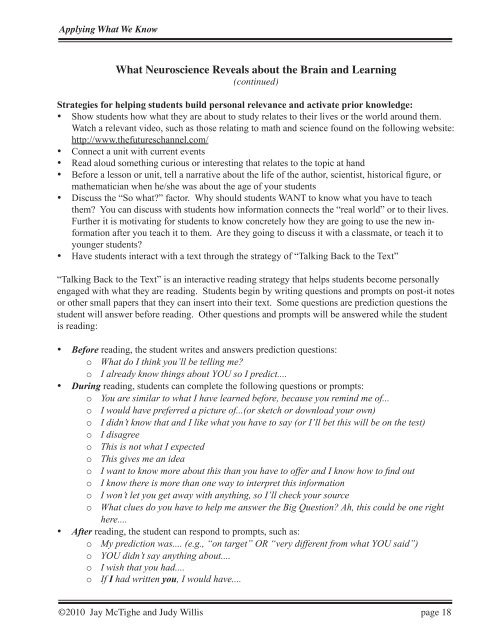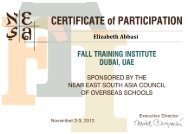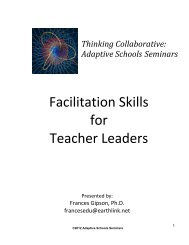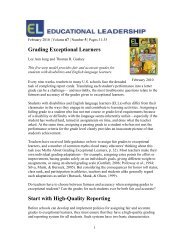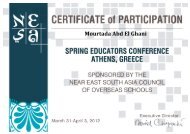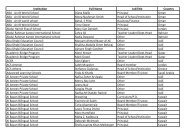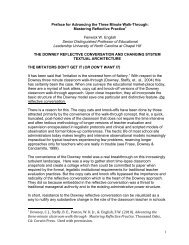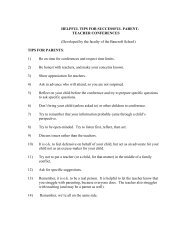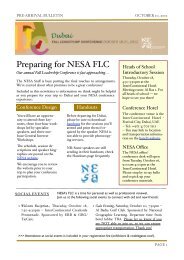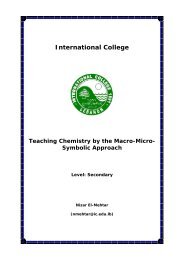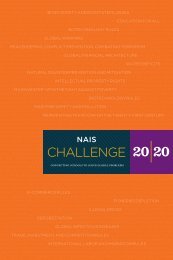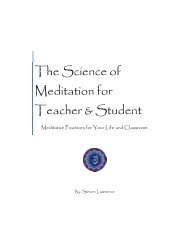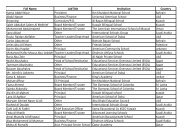Joint Presentation with Judy Willis - NESA
Joint Presentation with Judy Willis - NESA
Joint Presentation with Judy Willis - NESA
You also want an ePaper? Increase the reach of your titles
YUMPU automatically turns print PDFs into web optimized ePapers that Google loves.
Applying What We Know<br />
What Neuroscience Reveals about the Brain and Learning<br />
(continued)<br />
Strategies for helping students build personal relevance and activate prior knowledge:<br />
• Show students how what they are about to study relates to their lives or the world around them.<br />
Watch a relevant video, such as those relating to math and science found on the following website:<br />
http://www.thefutureschannel.com/<br />
• Connect a unit <strong>with</strong> current events<br />
• Read aloud something curious or interesting that relates to the topic at hand<br />
• Before a lesson or unit, tell a narrative about the life of the author, scientist, historical figure, or<br />
mathematician when he/she was about the age of your students<br />
• Discuss the “So what” factor. Why should students WANT to know what you have to teach<br />
them You can discuss <strong>with</strong> students how information connects the “real world” or to their lives.<br />
Further it is motivating for students to know concretely how they are going to use the new information<br />
after you teach it to them. Are they going to discuss it <strong>with</strong> a classmate, or teach it to<br />
younger students<br />
• Have students interact <strong>with</strong> a text through the strategy of “Talking Back to the Text”<br />
“Talking Back to the Text” is an interactive reading strategy that helps students become personally<br />
engaged <strong>with</strong> what they are reading. Students begin by writing questions and prompts on post-it notes<br />
or other small papers that they can insert into their text. Some questions are prediction questions the<br />
student will answer before reading. Other questions and prompts will be answered while the student<br />
is reading:<br />
• Before reading, the student writes and answers prediction questions:<br />
o What do I think you’ll be telling me<br />
o I already know things about YOU so I predict....<br />
• During reading, students can complete the following questions or prompts:<br />
o You are similar to what I have learned before, because you remind me of...<br />
o I would have preferred a picture of...(or sketch or download your own)<br />
o I didn’t know that and I like what you have to say (or I’ll bet this will be on the test)<br />
o I disagree<br />
o This is not what I expected<br />
o This gives me an idea<br />
o I want to know more about this than you have to offer and I know how to find out<br />
o I know there is more than one way to interpret this information<br />
o I won’t let you get away <strong>with</strong> anything, so I’ll check your source<br />
o What clues do you have to help me answer the Big Question Ah, this could be one right<br />
here....<br />
• After reading, the student can respond to prompts, such as:<br />
o My prediction was.... (e.g., “on target” OR “very different from what YOU said”)<br />
o YOU didn’t say anything about....<br />
o I wish that you had....<br />
o If I had written you, I would have....<br />
©2010 Jay McTighe and <strong>Judy</strong> <strong>Willis</strong> page 18


